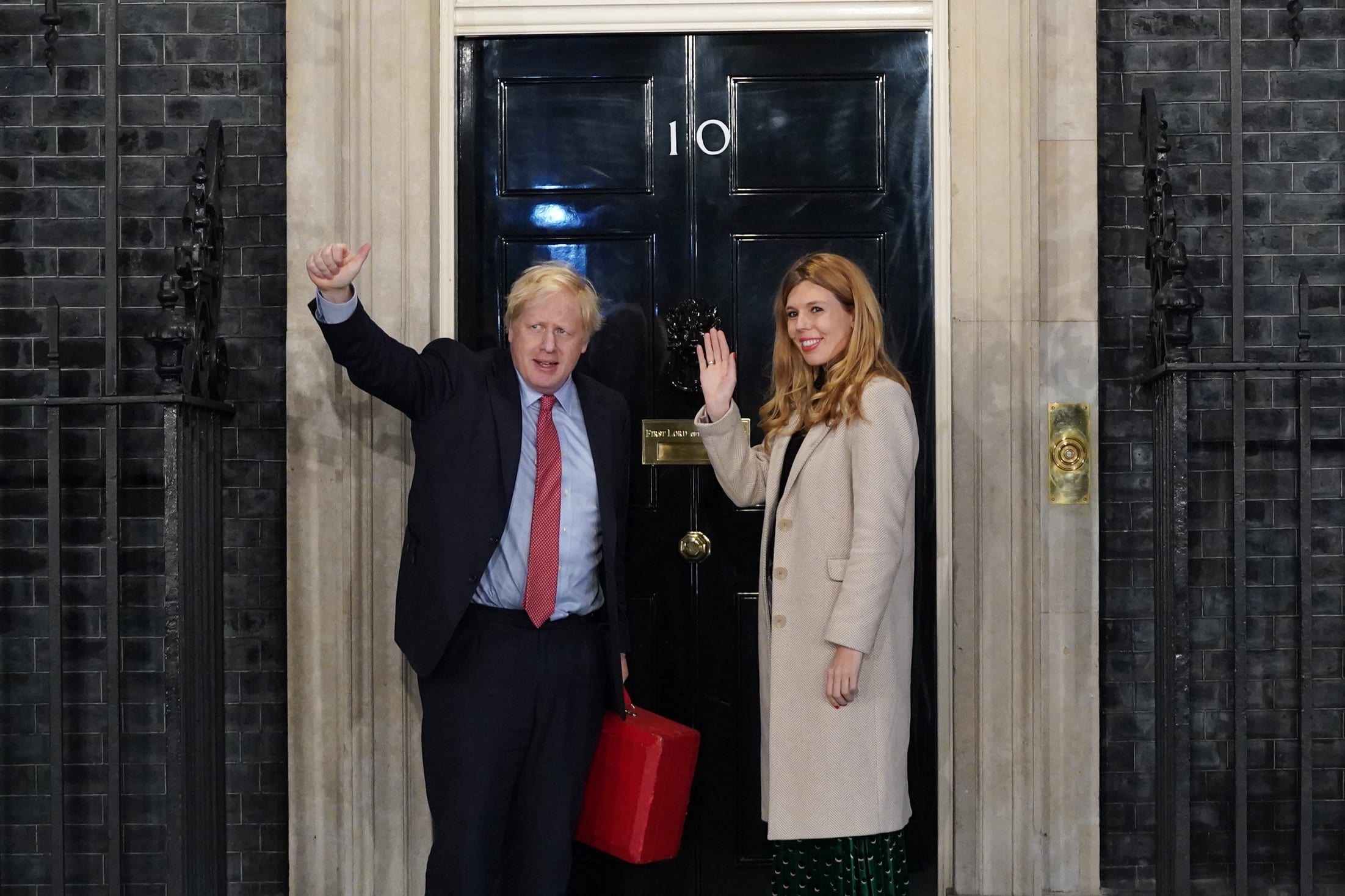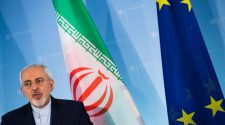Prime Minister Boris Johnson and his partner Carrie Symonds enter Downing Street as the Conservatives celebrate a sweeping election victory on December 13, 2019 in London, England.
Peter Summers | Getty Images News | Getty Images
Sterling will go into the first quarter of 2020 with some upside potential, according to currency experts, after a landslide U.K. election victory for Prime Minister Boris Johnson’s Conservative Party.
The pound jumped more than 2% as the scale of the victory became apparent, after an initial exit poll projected a mammoth 86-seat Conservative majority, with cable eventually topping out at $1.3515.
Markets received a boost from the short-term certainty offered by Johnson being granted license to push his Brexit agreement through Parliament before the January 31 deadline.
However, currency strategists are expecting the surge to be contained as the U.K. enters the new and equally challenging phase of negotiating its future trading relationship with the bloc before the end of 2020.
Expectations are that the country’s economic fundamentals could return to focus alongside trade discussions in driving the activity of the pound in the new year.
New phase of uncertainty
The pound came off its overnight highs early in Friday’s European trading session to hover just above the $1.34 mark, suggesting investors are not counting their chickens that the result automatically leads to a Brexit resolution.
“In the short term, the pound should now have a fairly calm trading pattern through to the new year, providing some welcome respite to businesses and investors,” Sebastien Clements, currency analyst at OFX, told CNBC via email on Friday.
“However, the currency’s landscape over the next three months is less certain, and depends heavily on the 31st January Brexit deadline. If Boris Johnson’s deal is passed, we can expect another short rally in the pound, but after that date we are essentially entering the unknown.”
Assuming Johnson’s deal passes next month, sterling will then be contingent on progress in the U.K.’s trade talks with the EU and other trading partners. Clements suggested that in the meantime, the currency may temporarily reattach itself to traditional economic data rather than Brexit headlines.
Tentative re-engagement
Goldman Sachs closed out its “long” recommendation for sterling as the pound reached the Wall Street giant’s near-term targets of $1.35 and 0.82 against the euro overnight, banking a hypothetical gain on its position of 3.1%.
“While we see a less compelling risk/reward proposition over the near-term, sterling may drift higher over the coming months as sidelined investors re-engage in U.K. assets,” Goldman analysts said in a note Friday.
The scale of Johnson’s majority means he is unlikely to be beholden to the hard euroskeptic faction of the Conservative Party, the ERG (European Research Group), in shaping Brexit policy in 2020. The ERG’s hold over the prime minister’s previous minority government was seen to be a key driver of divergence in attitudes between the U.K. and Brussels.
This election result may give Johnson license to bring the U.K. closer to the EU’s position on the future relationship than in previous negotiations, should he wish to do so. He still has a lot of work to do beyond the Brexit deadline, however.
UBS Wealth Management U.K. Economist Dean Turner said he expected Thursday night’s sharp sterling gains to hold, but to stagnate in early 2020.
“Looking ahead, we see little room for it to rally beyond 1.40, given continued uncertainty about the next stage of Brexit negotiations,” Turner commented via email Friday.
“Markets will be aware that the deadline for extending the transition period beyond the end of next year will be on 1 July, so Brexit headlines might still lead to further GBP moves.”
Don’t forget the economy
James Dowey, global equity fund manager at Liontrust Asset Management, suggested sterling may find it difficult to get beyond its current mid-$1.30s range in the medium term.
“While a way forward has at last been found, it is one that will very likely incur significant long-term economic costs so the bounce back will likely be limited in size and short-lived,” he said.
Dowey argued that the biggest headwind facing U.K. assets was not Brexit, but the productivity slowdown — the U.K. has seen a 90% decline in the rate of productivity growth over the past 10 years compared with the average across the previous four decades.
“Reduced foreign market access and competition — basic long-term aspects of Brexit — are likely to keep U.K. productivity growth fairly low, necessitating a continued focus on the financial soundness of U.K. companies for investors,” he added.
Oliver Harvey, U.K. macro and senior FX strategist at Deutsche Bank, said the election had distracted market attention from an “increasingly worrisome economic outlook,” with many recessionary warning signs flashing red.
“Unless the next government provides businesses with certainty the Brexit transition period will be extended beyond the end of 2020 and seek a closer economic relationship with the EU, we see limited prospects of a bounce-back in sentiment and investment,” Harvey commented in a note Friday.
“A related issue is whether, with a large majority, the government seeks a more-ambitious fiscal policy than outlined in its manifesto. As things currently stand, the U.K.’s fiscal impulse will be slightly negative next year.”


















